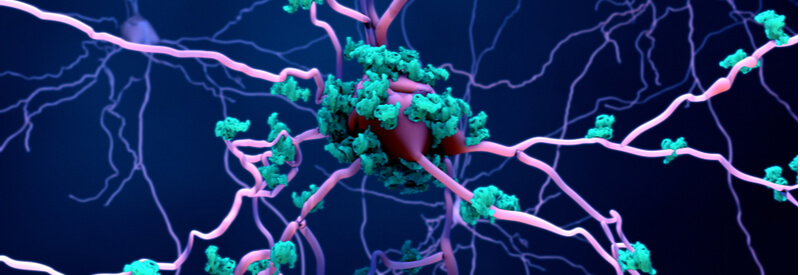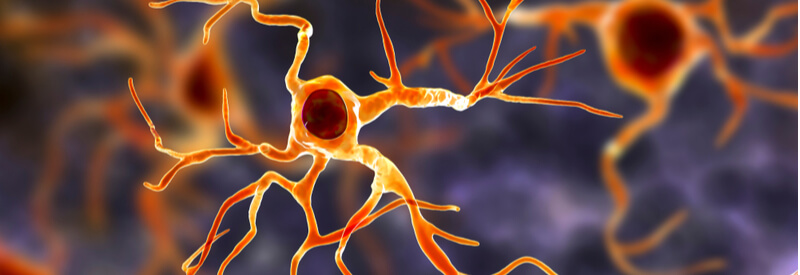Newsletter Signup - Under Article / In Page
"*" indicates required fields
Effective therapies for neurodegenerative diseases like Alzheimer’s are urgently needed. But developing new drugs is difficult, time-consuming, and expensive, with a high risk of failure. Strategic partnerships can help biotech companies manage costs and access the latest technologies to drive innovation and advance novel therapy ideas.
A serious unmet medical need
Finding treatments for neurodegenerative disorders such as Alzheimer’s disease is one of today’s largest unmet medical needs. Around 50 million people worldwide have some form of dementia, and numbers are expected to almost double every 20 years.
“Brain disease poses the third-largest health burden globally and deserves a suitable research focus,” said Fraser Murray, CEO of Pandeia Therapeutics, a biotech developing drugs for Huntington’s disease.
Developing effective therapies is difficult, as neurodegenerative disease profiles are heterogeneous, and despite following many leads over the last decades, researchers don’t fully understand the underlying pathophysiologies. Clinical trials testing drugs against Alzheimer’s and other neurodegenerative diseases are lengthy and complex and often lack robust biomarkers.
One theory for Alzheimer’s: limited success

Most scientists agree that two proteins in the brain – beta-amyloid and tau – are involved in Alzheimer’s disease. The amyloid hypothesis proposes that abnormal levels of beta-amyloid protein form plaques between neurons in the brain, disrupting cell function. Then, tau accumulates and forms neurofibrillary tangles inside the neurons, blocking their transport system.
Why these proteins accumulate, how they relate to each other, and what other factors are involved remains not fully understood. Most efforts to develop therapies have focused on this hypothesis and failed. Many experts question the amyloid hypothesis because plaques and tangles have also been found in people with no dementia symptoms.
Therefore, some researchers believe we need to investigate causative mechanisms more widely to develop alternative ways to treat Alzheimer’s disease.
For example, Alzheimer’s is known to cause low-level inflammation in the brain, so treating inflammatory processes could be an option. Changes in the brain’s insulin levels, heart and blood vessel health, and hormones may also play a role in Alzheimer’s disease, and researchers are exploring these avenues for Alzheimer’s drug development too.
Looking for new targets and genetic links

With the help of new technologies, researchers are shifting their search for new genetic links and therapeutic targets beyond beta-amyloid. As of May 2021, there were 152 clinical trials assessing 126 new agents for the treatment of Alzheimer’s disease worldwide.
Small molecules and biologics, such as monoclonal antibodies, oligonucleotides, and cell therapies are all under investigation. Mechanisms vary and include preventing the build-up of disease-causing proteins, suppressing specific transcription factors, expressing therapeutic proteins, and using stem cells to replace damaged brain cells.
Astrocytes are one example of a new approach. “Astrocytes have been overlooked in drug discovery and are potentially an untapped source of new targets. Astrocytic processes are fundamental to central nervous system homeostasis, and their dysfunction is both a consequence and cause of neurodegeneration,” explained Jamie Bilsland, CSO of AstronauTx, a UK biotech that is taking this alternative approach to fighting Alzheimer’s disease.
Current treatments only fight the symptoms of Alzheimer’s disease and may only have a temporary beneficial effect. Novel treatment strategies are aimed at disease modification, to delay, or prevent the onset of Alzheimer’s disease, but these require biomarkers to identify which people will develop Alzheimer’s and might benefit from therapies.
One promising biomarker and therapeutic target is the aggregatin protein, which attaches to amyloid-beta. Various RNA regulators could also be biomarkers or therapeutic targets. Genomic and transcriptomic studies comparing Alzheimer’s disease and healthy states will advance this area and further the understanding of the disease pathology.

The genetic links to Alzheimer’s disease are mostly undefined and are likely multi-factorial. Some risk genes are known, but how and when they cause disease is still not understood. Nevertheless, research continues to correlate genetic data with Alzheimer’s disease patient samples and brain scans.
Because multiple factors seem to be involved in the pathophysiology of Alzheimer’s disease, a one-target one-molecule approach for its treatment has been ineffective so far. Researchers are therefore investigating multipotent molecules that address more than one target at the same time, so-called multi-target directed ligands (MTDLs).
MTDLs come with several advantages, including increased efficiency, reduction of drug-drug interactions, and a simplified drug regimen for Alzheimer’s patients. A key issue of MTDLs researchers are still working on is how to optimize the efficacy of one drug on two or more different targets.
However, despite the large variety of therapeutic approaches in the global pipeline, the failure rate for drugs targeting Alzheimer’s disease remains high. There is a desperate need for new hypotheses and strategies, as well as tools to test these hypotheses, in pre-clinical discovery, translational studies, and clinical trials.
Sophisticated end-to-end solutions to advance Alzheimer’s research
How can small or emerging biotech companies advance their innovative hypotheses? For example, through strategic partnerships with global solutions providers, such as WuXi AppTec, biotechs can gain access to the latest technologies and expertise.
WuXi AppTec provides an extensive collection of high-quality R&D and manufacturing services.

“We have built an open, enabling platform to support any organization involved in drug discovery, across all modalities, from target identification and validation all the way to commercial manufacturing,” explained Dave Madge, Vice President at WuXi AppTec.
“The expertise we have developed and the facilities we have built give our collaborators access to the tools they need when they need them. This provides rapid, timely, and economical access to technologies and accelerates our collaborators’ discovery programs.”
The company’s in vitro hit-finding platform accelerates drug discovery by leveraging a broad suite of technologies to deliver novel, tractable, chemical matter. Diverse platforms, such as affinity selection mass-spectroscopy, DNA-encoded library screening, fragment screening, and biochemical screening, ensure that a suitable assay technology is available for all target types.
These assays are enabled by extensive protein production and cell-line development capabilities and further supported by orthogonal assay techniques, such as biophysics and visualization of ligand-protein interactions by x-ray crystallography. Sophisticated computational chemistry, virtual screening, and machine learning platforms inform and accelerate discovery programs.
WuXi AppTec provides a fully integrated solution for medicinal chemistry, in vitro and in vivo biology, and drug metabolism pharmacokinetics studies to rapidly transform screening hits into clinical candidates.

The platform also includes induced pluripotent stem cell-derived cell lines, disease models, and patient-derived cell lines, as well as a variety of sophisticated animal models for Alzheimer’s, Parkinson’s disease, encephalomyelitis, and amyotrophic lateral sclerosis.
“As our understanding of genomics and biological pathways expands, human diseases, once thought untreatable, are well within our realm of intervention,” said Kris Rutten, Director at WuXi AppTec.
“Large molecule drugs like peptides, oligonucleotides, bispecific antibodies, and proteolysis targeting chimera’s – PROTACs – are emerging new modalities that are generating a big buzz in the world of drug development. Our integrated platform fully supports these new modalities from early hit finding campaigns through lead generation and candidate selection.”
Alzheimer’s disease drug development has faced limited success so far, but as researchers combine new technologies and strategic partnerships, the expectation is that they can accelerate innovation and improve outcomes in the future.
Do you want to learn more about WuXi AppTec’s discovery services for Alzheimer’s disease? Visit the company’s website or get in touch with the experts!
Images via Shutterstock.com
This article was originally published in September 2020 and has been updated to include the most recent data available.






